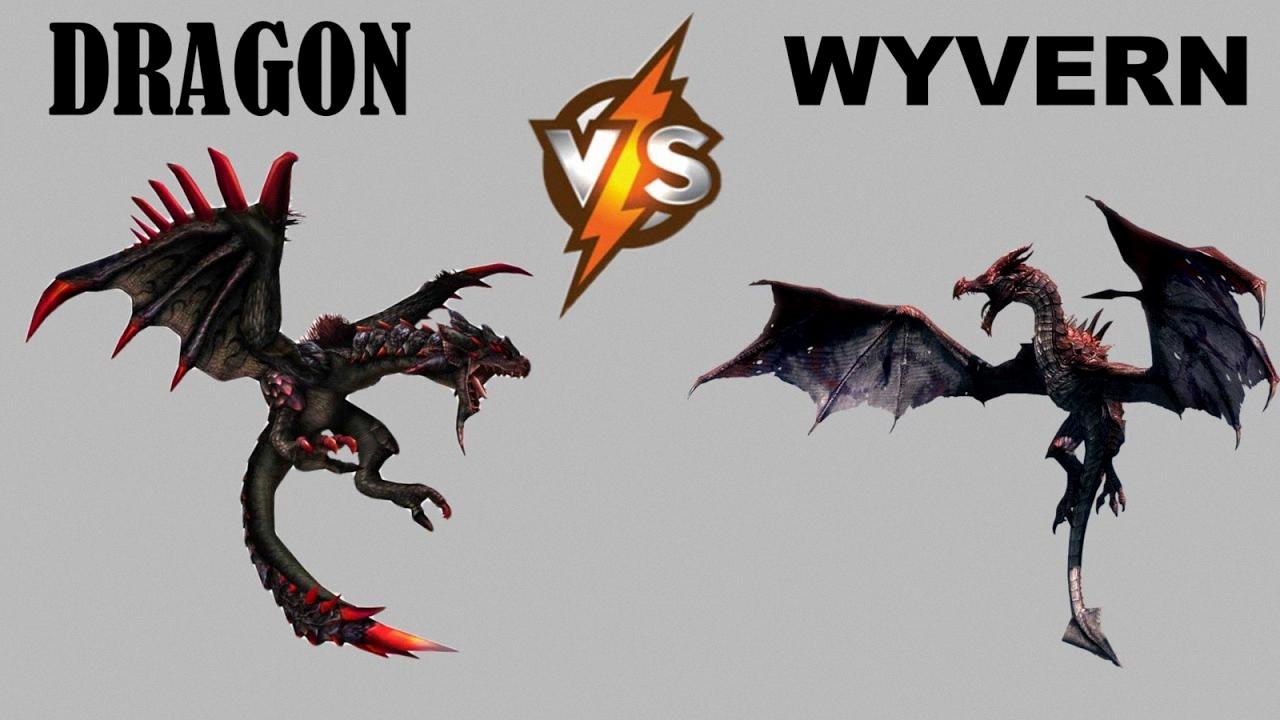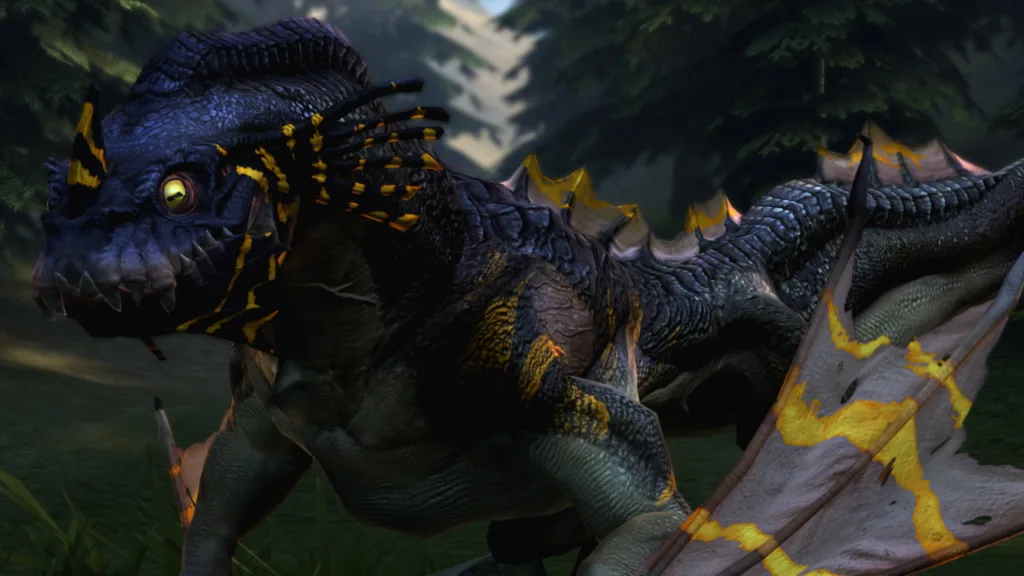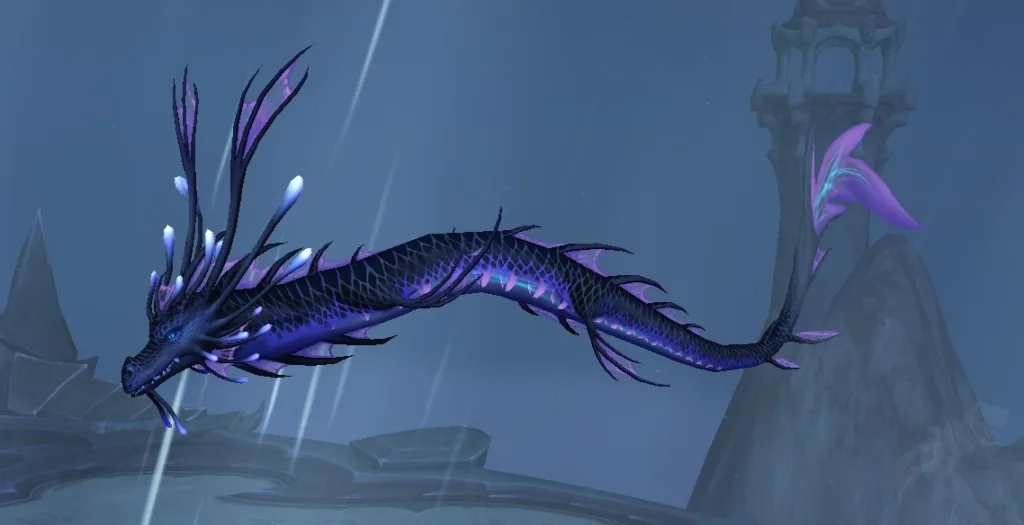Dragons and wyverns are both legendary creatures that have captured the imagination of people for centuries. They are often depicted in popular media, such as books, movies, and video games. However, there are some key differences betwen these two creatures that are worth exploring.
Firstly, dragons are typically depicted as giant, serpentine creatures with wings, four legs, and the ability to breathe fire or other elements. They are often seen as powerful and intelligent beings with the ability to speak and hold conversations with humans. In contrast, wyverns are typically depicted as smaller, more animalistic creatures with two legs and wings. They are often seen as more primitive and less intelligent than dragons.
Another key difference between dragons and wyverns is their physical appearance. Dragons are often depicted as having scales, horns, and a long, powerful tail. They are usually seen as serpentine creatures with a long, slender body. Wyverns, on the other hand, are often depicted as having a more reptilian appearance with leathery skin and a broad, muscular tail. They are also known to have a venomous stinger at the end of their tail.
In terms of abilities, dragons are often depicted as having the ability to breathe fire or other elements, such as ice or lightning. They are also known for their strength and endurance, which makes them formidable opponents in battle. Wyverns, on the other hand, are often depicted as being faster and more agile than dragons. They are known for their speed and the ability to fly quickly and maneuver through the air with ease.
There are also some cultural differences between dragons and wyverns. Dragons are often seen as symbols of power and strength in Western culture, while in Eastern culture, they are often seen as symbols of good luck and prosperity. Wyverns, on the other hand, are often associated with evil or destruction, and are rarely seen as positive symbols in any culture.
While dragons and wyverns may share some similarities, they are distinct creatures with their own unique traits and abilities. Dragons are often seen as powerful and intelligent beings, while wyverns are known for their speed and agility. Regardless of which creature you prefer, there is no denying that both dragons and wyverns have captured the imagination of people for centuries, and will continue to do so for many years to come.
Comparing the Strength of Wyverns and Dragons
In terms of strength, ancient dragons are generally considered to be more powerful than wyverns. This is due to the fact that dragons possess a wider range of abilities, such as elemental breath attacks and magical abilities, that wyverns do not possess. Additionally, dragons are typically larger and have tougher scales, making them more resilient in battle. However, it’s important to note that individual wyverns and dragons can vary in strength depending on their size, age, and level of experience. Ultimately, whle dragons are generally considered to be stronger than wyverns, it’s difficult to make a definitive comparison as the two creatures have different abilities and strengths.

Source: youtube.com
Is a Wyvern a Dragon?
A wyvern is considered a type of dragon. However, it is important to note that wyverns are distinct from other types of dragons due to their physical characteristics. Unlike other dragons, wyverns have only two legs instead of four, which makes them more animalistic in appearance. Additionally, some wyverns may have a venomous stinger at the end of their tail, which is not a common feature of other dragons. Despite these differences, wyverns are still classified as dragons in most fantasy literature and mythology.
Is Smaug a Dragon or a Wyvern?
Smaug is commonly referred to as a dragon in J. R. R. Tolkien’s novel The Hobbit. Dragons are typically depicted as large, fire-breathing creatures with wings, four legs, and a long tail. Wyverns, on the other hand, have only two legs and wings, and are typically smaller than dragons. While there is some debate among fantasy enthusiasts about the exact characteristics that define dragons and wyverns, the consensus is that Smaug is a dragon due to his four legs and size, as well as his ability to breathe fire. Therefore, Smaug is unequivocally a dragon.
The Origins of the Name Wyvern for Dragons
Wyverns are sometimes called dragons because they share many physical characteristics with dragons, such as wings, scales, and a long tail. Moreover, wyverns are also mythical creatures that have been depicted in many cultures and mythologies, just like dragons. However, wyverns are typically depicted as having two legs and two wings, while dragons are depicted as having four legs and two wings. Despite these differences, the terms wyvern and dragon are oten used interchangeably in modern media, leading to some confusion between the two. Nonetheless, it is important to note that wyverns are distinct from dragons and have their own unique characteristics and lore.
Differences Between a Wyvern and a Dragon
A wyvern is not considered a dragon in English, Scottish, and Irish heraldry because of a key physical characteristic – the number of legs. A wyvern has only two legs, while a dragon has four. This distinction has been observed since the sixteenth century in these countries, although it is not commonly followed in other European countries were two-legged dragon-like creatures are referred to as dragons. In heraldry, it is important to accurately describe and differentiate between various mythical creatures, and the distinction between dragons and wyverns is an example of this practice. Therefore, while both creatures may share similarities in appearance and mythology, the number of legs is a crucial factor that sets them apart in heraldry.

Comparing the Strength of a T Rex and a Dragon
In a hypothetical battle between a T-Rex and a Komodo Dragon, the T-Rex would most likely emerge as the victor. This is primarily due to the significant size difference between the two creatures. The T-Rex, standing at 20ft tall and measuring 40ft in length, weighs about 15,000lbs, making it one of the largest carnivorous dinosaurs that ever lived. On the other hand, the Komodo Dragon, which is the largest lizard in the world, only stands at 2ft tall and has a length of roughly 10ft, with a maximum weight of 300lbs.
In terms of physical prowess, the T-Rex has a powerful bite force and sharp teeth designed to tear through flesh and bone. Its large size, coupled with its muscular build, makes it a formidable predator that can take down prey seveal times its size. The Komodo Dragon, while deadly in its own right, lacks the sheer strength and power of the T-Rex.
However, it’s important to note that a battle between a T-Rex and a Komodo Dragon is purely hypothetical since they existed in different time periods. The T-Rex lived during the Late Cretaceous Period, about 68-66 million years ago, while the Komodo Dragon is a modern-day lizard. Despite the size advantage of the T-Rex, it’s always best to appreciate the unique abilities and traits of each creature without pitting them against each other in a fight to the death.
Is Rathalos a Dragon?
Rathalos is a monster in the Monster Hunter franchise, and it is commonly referred to as a dragon by players and fans of the series. However, the classification of Rathalos as a dragon is not entirely accurate. While it shares some similarities with dragons, such as its ability to breathe fire and its ferocious nature, Rathalos is actually more closely related to a wyvern.
Wyverns are a type of mythical creature that are typically depicted as winged creatures with two legs and a tail, lacking the arms that are characteristic of dragons. This description closely matches the physical appearance of Rathalos, which has a serpentine body with two legs, powerful wings, and a long, barbed tail. Additionally, Rathalos possesses a set of poisonous claws, which is another trait commonly associated with wyverns.
While Rathalos is oftn referred to as a dragon, it is more accurately classified as a wyvern due to its physical characteristics and abilities.
Are Wyverns Considered Evil?
The answer to whether wyverns are evil or not is not definitive. In many myths and legends, wyverns are portrayed as evil and malevolent creatures, often assoiated with destruction and chaos. In these stories, they are depicted as aggressive predators that attack humans and other animals without provocation. They are also believed to hoard treasure and guard it fiercely, making them a common enemy in many tales.
However, not all interpretations of wyverns depict them as inherently evil creatures. Some stories portray them as neutral beings, neither good nor evil, and simply existing in the world alongside humans and other creatures. In other instances, wyverns are depicted as benevolent creatures, willing to fight alongside humans against greater threats or evil forces.
Ultimately, whether a wyvern is considered evil or not depends on the particular interpretation of the creature in question. While many stories do portray them as malevolent beings, others offer a more nuanced and complex view of these mythical creatures.
What Is the Meaning of a Dragon Without Legs?
A dragon without legs is commonly referred to as an amphiptere. Amphipteres are mythical creatures that resemble large snakes with two feathered wings and a dragon’s head. They are considered to be the most serpent-like dragons and are known for their unique physical characteristics, including their lack of legs. Despite their lack of limbs, amphipteres are powerful dragons that are often depicted in mythology and literature as fierce and formidable creatures.

The Mystery of Smaug’s Two Legs
Smaug, the legendary dragon from J.R.R. Tolkien’s “The Hobbit” book, only has two legs instead of four due to the design decision made by the visual effects company Weta Digital. Benedict Cumberbatch prvided both the voice and motion capture performance for the character in the film adaptation of “The Hobbit,” and his movements as Smaug led the designers at Weta to rethink the dragon’s design. They decided that Smaug would have two legs to make his movements more agile and dynamic, which would help to create a more compelling and realistic portrayal of the character on screen. This design choice also allowed for more focus on Smaug’s massive wings and tail, which play important roles in his movements and battle scenes. the decision to give Smaug only two legs was driven by the desire to create a more visually impressive and engaging dragon character for the film adaptation of “The Hobbit.”
Is Toothless a Wyvern?
Toothless, the beloved dragon from the “How to Train Your Dragon” franchise, is often mistaken for being a wyvern due to his physical appearance. However, Toothless is actually a dragon. The main distinguishing feature between a wyvern and a dragon is the number of legs. Wyverns have two hind legs and two wings, while dragons have four legs and two wings. Toothless has four legs and two wings, making him a dragon. Additionally, Toothless has a long, serpentine tail, which is a characteristic feature of dragons. Therefore, there is no doubt that Toothless is a dragon, not a wyvern.
The Evil Nature of Smaug
Smaug, the dragon in J.R.R. Tolkien’s “The Hobbit,” is considered evil due to his destructive nature and selfish desires. He hoards treasure, including the Arkenstone, and will do anything to protect it, even if it means harming innocent people. Smaug’s attack on the town of Lake-town and the displacement of its inhabitants is a prime example of his ruthless behavior. He shows no remorse or empathy for the lives he destroys, which is a clear indication of his evil nature. Additionally, Smaug is kown to be cunning and manipulative, using his intelligence to trick and deceive others. These traits, combined with his destructive tendencies, make Smaug a classic example of an evil character in literature.
What Is a WYRM?
A Wyrm is a mythical creature that resembles a large, limbless, and wingless dragon or serpent. It is often depicted with a long, serpentine body and a large head with sharp teeth. In some mythologies, it is also associated with the element of earth and is believed to dwell underground.
The term “wyrm” is derived from Old English and was used to describe various types of dragons and serpents in medieval literature. In Norse mythology, the creature was known as a Jörmungandr and was believed to be a sea serpent that encircled the world.
In fantasy literature, the wyrm is often depicted as a powerful and fearsome creature that can breathe fire or poisonous gas. It is somtimes portrayed as a guardian of treasure or a foe to be defeated by heroes on a quest.
The wyrm is a fascinating creature that has captured the imagination of people for centuries and continues to be a popular subject in mythology and fantasy literature.

What Characteristics Define a Dragon?
A dragon is a mythical creature that is typically depicted as a large, reptilian beast with wings, sharp claws, and a long, barbed tail. One of the most distinctive features of a dragon is its ability to breathe fire or other forms of elemental energy, such as ice or lightning. Dragons are also commonly depicted as having scales or tough, armored skin that protects them from harm.
In many cultures, dragons are associated with strength, power, and wisdom, and they are often revered as symbols of good fortune and protection. However, in other traditions, dragons are feared and reviled as dangerous creatures that must be defeated or tamed.
The defining characteristics of a dragon include ther reptilian appearance, their ability to breathe fire or other forms of energy, and their association with power and wisdom. While the exact details of dragon mythology vary from culture to culture, these core elements are typically present in most depictions of these mythical creatures.
Conclusion
While dragons and wyverns share some similarities, they are distinct creatures in the realm of fantasy. Dragons are typically depicted as large, fire-breathing creatures with four legs and wings, while wyverns are smaller, more animalistic dragons with two legs and a venomous stinger on their tail. While dragons are oftn portrayed as wise and powerful, wyverns are known for their speed and agility. Both creatures have played prominent roles in literature and mythology, capturing the imaginations of people for centuries. Whether one prefers the majesty of a dragon or the ferocity of a wyvern, both creatures continue to fascinate and inspire us with their unique qualities and characteristics.
